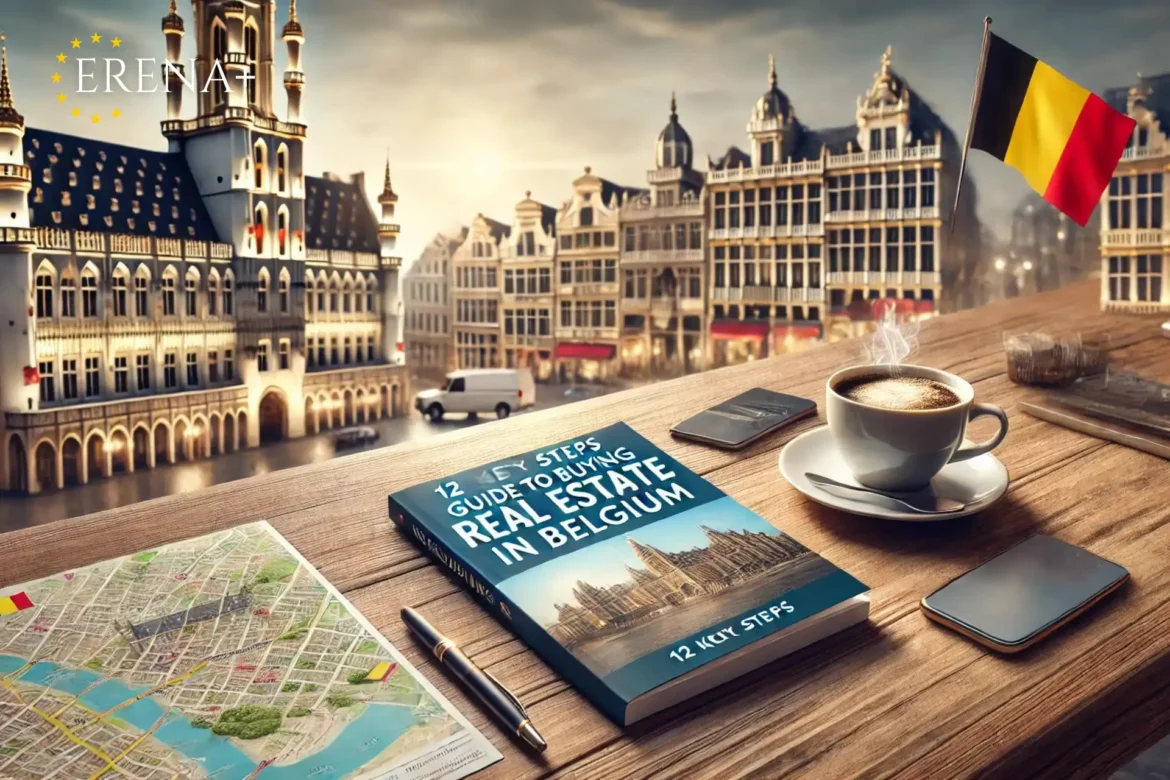Belgium stands out as a prime destination for real estate investment, thanks to its central European location, robust economy, and high living standards. Whether you’re searching for a city apartment, a countryside retreat, or an investment property, Belgium offers diverse options for all preferences and budgets.
Step 1: Research the Real Estate Market
Understanding the market is essential. Property prices in Belgium vary by location, type, and market trends.
- Brussels: ~€3,300/m²
- Antwerp: ~€2,800/m²
- Ghent: ~€2,500/m²
- Rural Areas: €1,500-€2,000/m²
Step 2: Choose the Right Property Type
Determine the property that aligns with your goals:
- Apartments: Urban areas; starting at €200,000.
- Houses: Suburban/rural areas; starting at €250,000.
- Investment Properties: From €300,000, suitable for commercial or rental purposes.
Step 3: Discover Popular Regions
- Brussels: International appeal, ideal for expats and investors.
- Antwerp: A cultural and economic hub.
- Wallonia: Affordable countryside homes.
- Flanders: Picturesque towns like Ghent and Bruges.
Step 4: Understand the Purchase Process for Foreigners
Foreigners face no restrictions when purchasing property in Belgium. Ensure you:
- Work with a Belgian notary to handle legalities.
- Consult a real estate agent familiar with local markets.
Step 5: Factor in Additional Costs
Prepare for extra costs beyond the purchase price:
- Registration Tax: 6%-12.5%, region-specific.
- Notary Fees: 1.5%-2% of property value.
- Real Estate Agent Fees: 3%-5% of purchase price.
- Miscellaneous Costs: €500-€1,000 for administrative tasks.
Step 6: Assess the Property’s Condition
Hire a certified surveyor to evaluate the property’s structure, plumbing, and electrical systems. Expect survey costs between €500 and €1,500.
Step 7: Negotiate the Price
Property prices are negotiable. Offering slightly below the asking price can create room for negotiation. Let your agent assist in discussions.
Step 8: Arrange a Mortgage
Belgian banks offer mortgages to foreigners under specific conditions:
- Finance up to 80% of the property value.
- Average interest rates: 2.5%-3% (2024).
- Required documents: proof of income, residency status, and creditworthiness.
Step 9: Prepare the Required Documents
Key documents include:
- Proof of identity (passport or ID).
- Property deed (from the seller).
- Mortgage agreement (if applicable).
- Survey report (confirming the property’s condition).
Step 10: Register the Ownership
Register your property with the Land Registry (Cadastre) within four months of purchase. Registration fees are part of your purchase costs.
Step 11: Understand Property Taxes
Annual property taxes (“précompte immobilier”) are based on the cadastral value. Rates range from 1% to 2.5% of the cadastral value.
Step 12: Renting Out Your Property
Planning to rent? Follow these guidelines:
- Familiarize yourself with local rental laws.
- Ensure the property complies with legal and safety standards.
- Rental yields range from 3%-5%, depending on location and property type.
Conclusion
Investing in Belgian real estate can be rewarding with proper preparation. Follow these steps and consult local experts to streamline your purchase and secure the ideal property.

